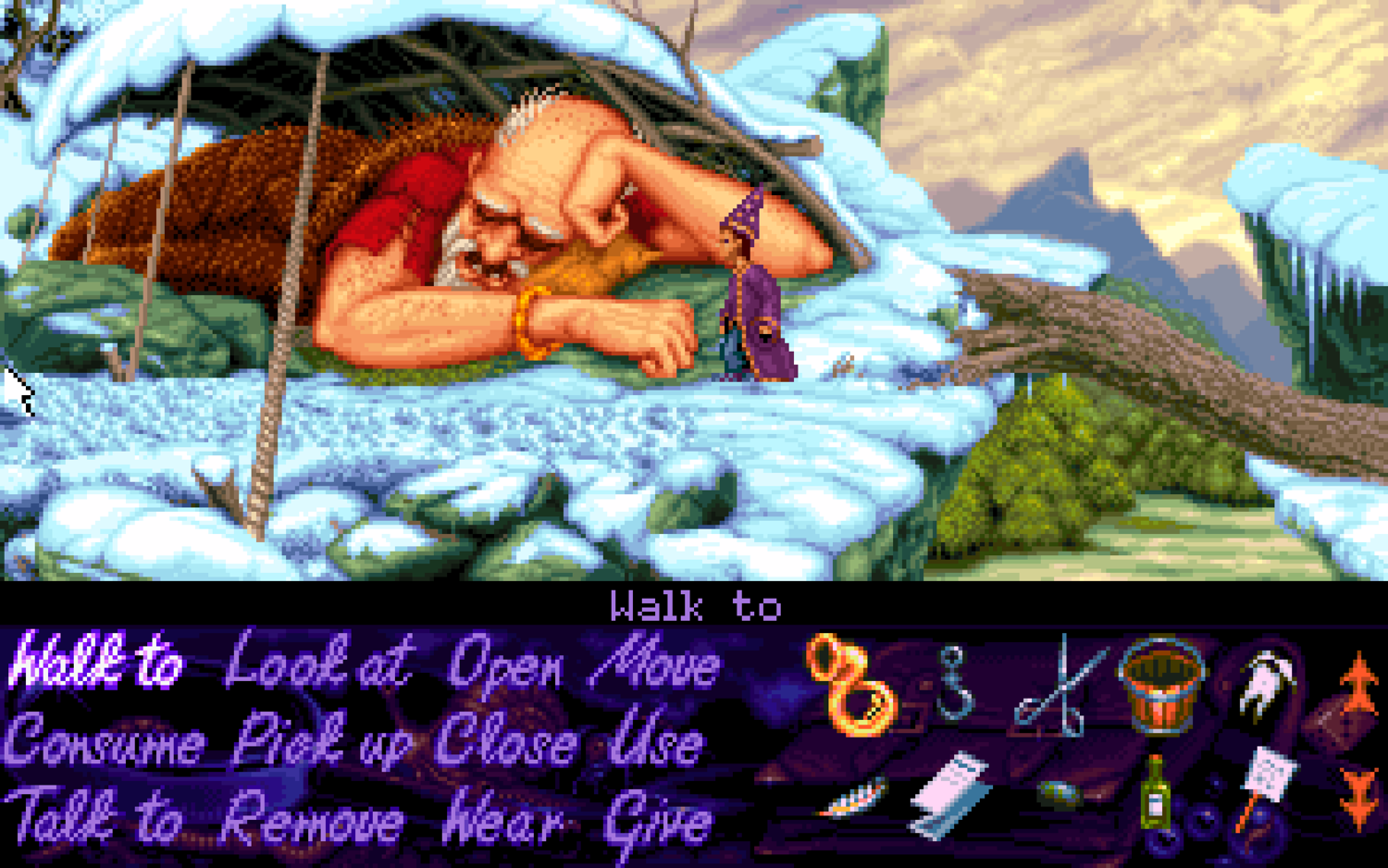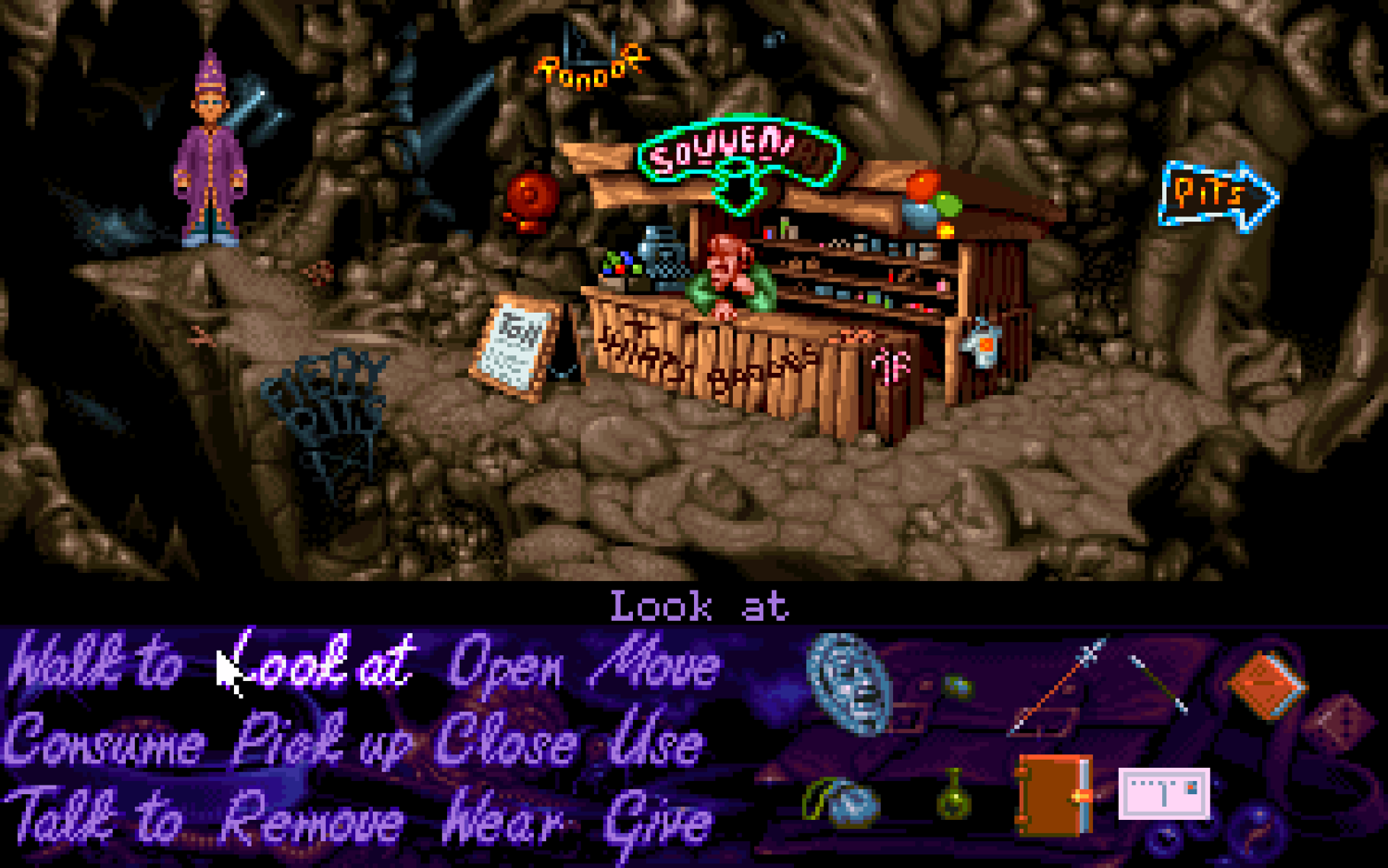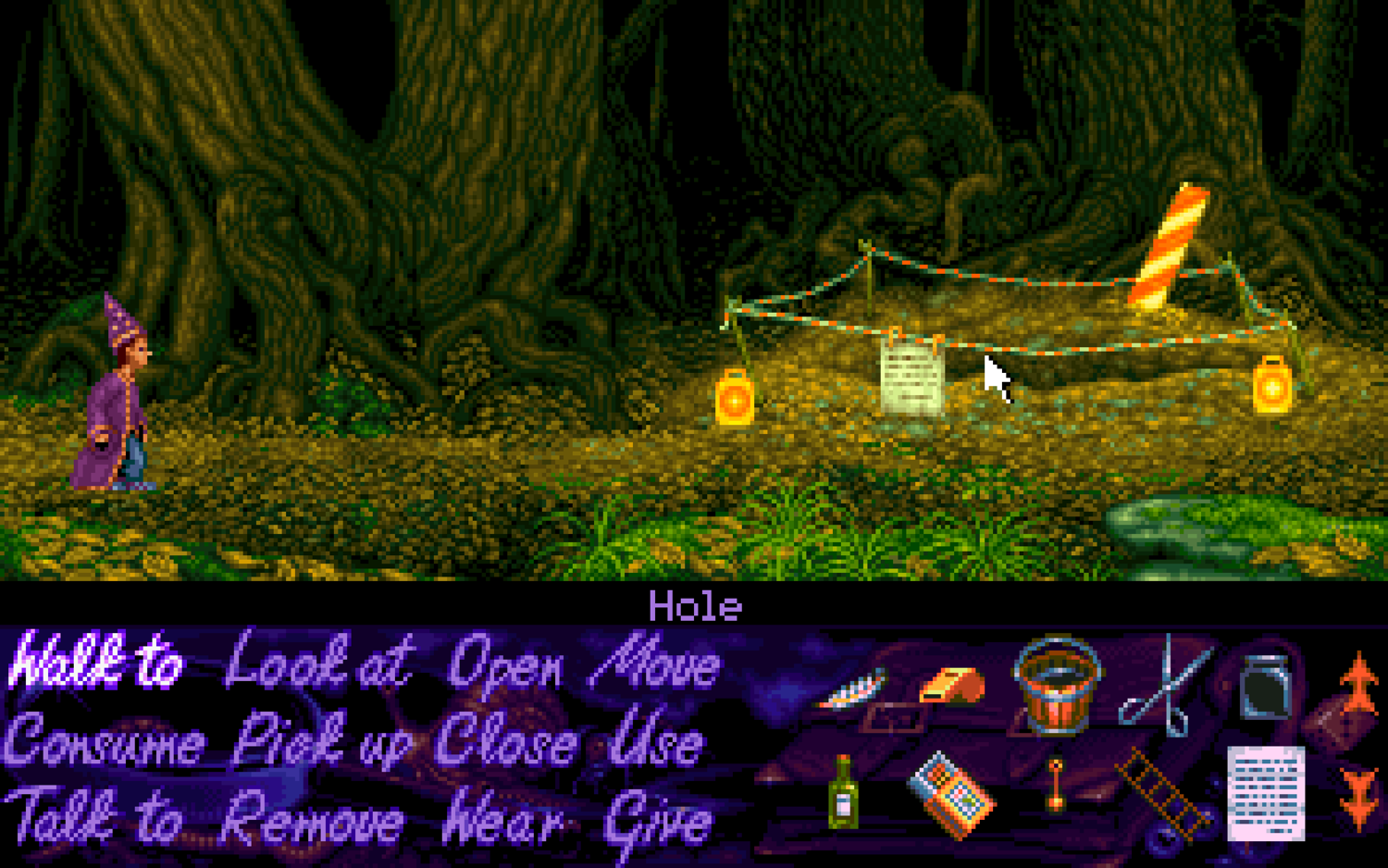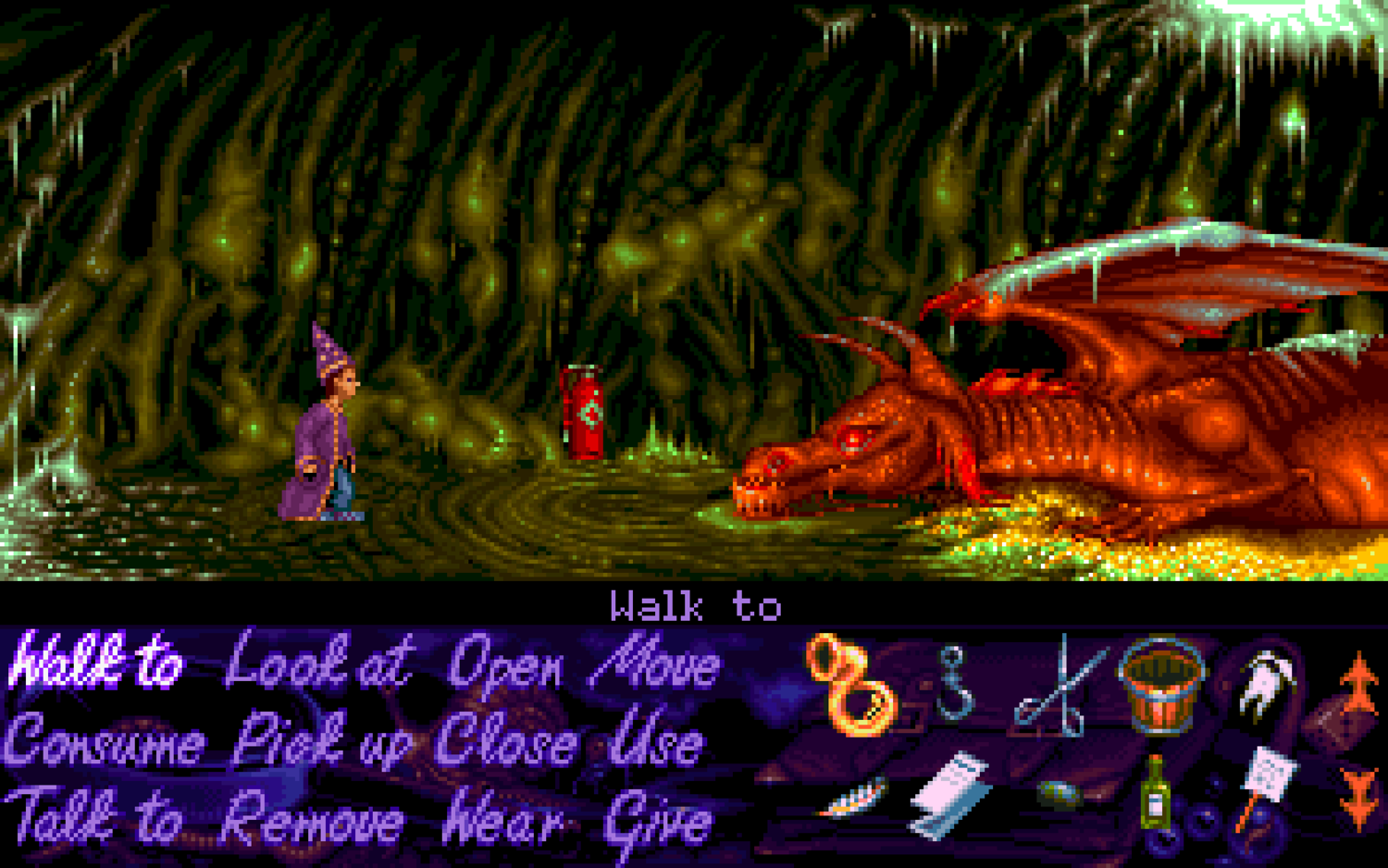This post was originally written before the 25th Anniversary Edition was released in April 2018
Simon the Sorcerer is a 1993 adventure game by Adventure Soft. You play Simon, a teenager who chases his dog through a portal and into a world is under threat from Sordid. It’s up to the rather sarcastic Simon to become a certified wizard, rescue Calypso, and save the day in a game that gleefully subverts and gently mocks many fantasy tropes.
Magical Postcards
The world is massive and about 80% of it is immediately available to the player from the start. My first couple of hours of playing consisted of exploring, talking to characters, and picking up things.

This was fine for a while, but the opportunities to actually use the things I was picking up and move the game forward were limited and I found myself having to return to the same locations over and over again.
You have a map and you can fast travel around to locations you’ve visited at least once. This was a great design decision and one that’s not used often in adventure games but is necessary when the game world is as large as this one. Unfortunately, it was not enough to solve the underlying feeling of lack of progress.
A common theme that I’ve mentioned a few times in other posts is the importance of limiting the game world and using new locations as a reward, something that LucasArts and most Sierra games do well.

Breaking the game up in to smaller acts with discrete goals with more limited locations—for example: become a wizard, get access to Sordid’s tower, defeat Sordid—would have dramatically improved the pacing. Despite all the many fun moments to be had along the way, the game meanders and progress comes in fits and starts making it feel slow and uneven.
I Think I’ll Put the Dog in the Dryer Again
There are also some frustrating and baffling UI decisions:
- Scrolling through the inventory only wraps one way, which is either a weird decision that feels like a bug or a bug that feels like a weird decision.
- You cannot skip dialogue you’ve heard before which becomes an irritation when returning to interact with characters you’ve already met (or when you attempt to purchase every item in the shop to find out what’s actually for sale).
- There are 12 verbs and no keyboard shortcuts. It also lacks any sort of contextual awareness (e.g. replacing “walk to” with “talk to” when clicking on characters).
- Sometimes the layout of the scenes makes knowing what paths are available non-obvious. It looks like the path from Calypso’s cottage leads out towards the screen, but it’s actually behind the flowers to the right, and it took me forever to realise that I could go behind the hut and find his garden.
- If Simon enters the idle animation of listening to his Walkman, you have to wait for him to slowly put it away before he responds to your interaction.

Some of these could just be problems with the ScummVM port that GOG uses and may have been solved in the 25th Anniversary Edition (although, judging by the reviews, it seems that this edition is just the ScummVM version with a filter applied).
However, they remain instructive to aspiring adventure game developers. Seemingly tiny issues become large problems simply because of the frequency at which they appear and it’s worth spending the time to really nail down these little things, especially if they waste a player’s time.
I think I’d rather have minor graphical or audio glitches if it meant I could skip lines of dialogue, use keyboard shortcuts, and have some sort of contextual awareness.
That’s Just Plain Silly
Despite these frustrations with the UI, there are plenty of enjoyable moments to be found. From protesting goats to frustrated archaeologists to the delicious swamp stew, it’s an ambitious and imaginative take on the fantasy genre.

The writing is decent and Chris Barrie is an absolute delight as the titular character (even if his voice talent does tend to highlight the lack of experience of much of the rest of the cast).
Simon the Sorcerer lacks the tightness of story, scope management, and subtle character comedy of LucasArts titles but there are some great comic touches. The clever references and the subversion of tropes will appeal to fantasy fans and it remains an enjoyable adventure game.
Major Lesson: Get the UI right.
